
The Heat Is Rising, and UCLA Luskin Research Is Helping L.A. Respond Environmental justice has been the cornerstone of Luskin School efforts related to the city’s hot weather policies
By Les Dunseith
As Southern California braces for more heat waves this summer, the city of Los Angeles has launched its most comprehensive and equitable response ever, thanks in part to partnerships with student, faculty and staff researchers from UCLA Luskin.
Interactive mapping tools co-developed by Luskin School-affiliated scholars and the Public Health Alliance of Southern California, for instance, are helping government officials and social services providers better visualize the neighborhoods most in danger from extreme heat. And research has helped ensure that city resources like cooling centers are being deployed in areas with high numbers of low-income residents and communities of color — groups that tend to be disproportionately affected by hot weather but whom previous heat-mitigation efforts often failed to reach.
Heat as an Equity Issue
While California has not historically viewed hot weather in the context of social equity, heat’s disparate impact on the state’s various populations has been a central focus of Luskin School and other UCLA research.
“Heat is an equity issue. Neighborhood by neighborhood, we’re going to be experiencing heat differently,” said Colleen Callahan, co-executive director of the Luskin Center for Innovation and co-author of the center’s three-part series on California’s Extreme Heat Action Plan. “That’s why it’s important to identify where protections are most needed and where they’ll have the biggest impact.”
Among those equitable protections is providing shade from the heat, said V. Kelly Turner, an associate professor of urban planning and point person for the Luskin Center for Innovation’s climate adaptation and resilience research. In a July 2023 commentary in the journal Nature, Turner detailed how a lack of shade affects urban residents — particularly those from low-income and marginalized communities, who tend to live in heat-prone areas that lack air-conditioning and tree cover — and stressed the need for cities to remove regulatory restrictions that make it difficult to build shade infrastructure.
“It’s going to take a setting-by-setting approach, whole of government approach, where we look at all the regulations that make it really hard to do the right thing,” she recently told LAist.
A related recent capstone effort at the Luskin School involved graduate students in public policy. Their research (PDF) explored historical inequities in Los Angeles and included a survey to assess how the city can create an equitable heat policy with long-term resilience for vulnerable communities.
It’s the hope of Callahan, Turner and many other UCLA scholars that their research will spur the city of Los Angeles and its Climate Emergency Mobilization Office to continue to implement equitable and forward-thinking responses to extreme heat.
Finding CEMO
Twitter:
CEMO_EJ4LA
Facebook:
facebook.com/EJ4LA
Instagram:
CEMO_EJ4LA
These and other UCLA contributions are informing the city’s equity-based approach to the threat posed by climate change and rising temperatures, said Marta Segura, Los Angeles’ first chief heat officer and director of the city’s Climate Emergency Mobilization Office. Launched in 2021, CEMO is responsible for coordinating across agencies to create a cohesive response to extreme heat.
“It’s my belief that in focusing on equitable climate solutions and investing first and foremost in the historically disinvested communities, we will accelerate climate solutions for everybody,” Segura, a UCLA Public Health alumna, said during a May panel discussion at UCLA organized by the UCLA Luskin Center for Innovation.
Using data gathered in partnership with UCLA scholars, CEMO was able to identify which cooling centers received a lot of use in previous years, which didn’t and where the need was greatest. This summer, the number of city-coordinated facilities offering heat relief — including air-conditioned recreation centers and public libraries that stay open beyond regular hours — has expanded significantly.
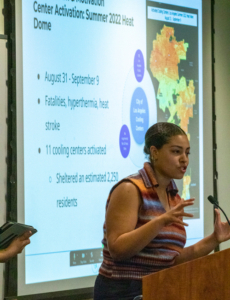
Corinne Odom discusses the importance of cooling centers at the Comprehensive Project’s June 2023 presentation. Photo by Les Dunseith
The students focused on three areas — cooling centers, emergency response and bus shelters. Their final report (PDF), released in June, commended Los Angeles for being at the forefront of government efforts on extreme heat but noted room for improvement to ensure public safety and equitable distribution of resources.
Corinne Odom was among the students who looked at cooling centers. She and her classmates spoke with staff members at libraries who were eager to help but frustrated that people in danger didn’t seem to know these facilities were available.
“Visitor counts at cooling center locations last summer were low,” Odom said. “So, really informing people that they’re available is important, and that’s something that CEMO is prioritizing.”
Odom and her classmates were supportive of the city’s efforts to create “resiliency centers” by offering a broader range of social services programs and heat-related amenities at locations like recreation centers and public libraries that traditionally serve as cooling centers. They also noted that CEMO’s communication efforts also recommend informal locations where residents can duck in quickly to escape extreme heat.
“A mall could be a cooling center,” Odom said, “or a movie theater.”
A particularly difficult challenge for city officials is reaching the people in the most danger — the unhoused population.
Michelle Gallarza, a Comprehensive Project participant who contributed to Luskin Center for Innovation research on heat and housing insecurity, noted that the unhoused population’s lack of shelter makes them particularly vulnerable during heat waves.
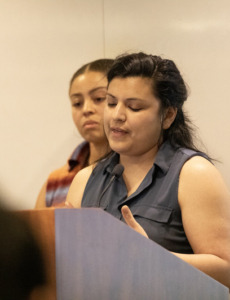
Michelle Gallarza, shown here talking about the Comprehensive Project’s findings, remembers the lights being left off during heat waves in her Los Angeles grade school that lacked air conditioning. “The same thing would happen when I would go home,” she said. “We’d just have fans blowing and no lights on.” Photo by Les Dunseith
“These people are more likely to suffer from the extreme aspects of heat and a really increased likelihood for illness and, unfortunately, death,” she said.
In Los Angeles County, unhoused people accounted for 42% of heat-related deaths in 2022, even though they make up less than 1% of the population. Beyond having less access to indoor cooling than the general population and facing challenges getting information about emergency resources, they may not always feel comfortable in city-provided facilities, said Gallarza, who spoke with an unhoused person who said cooling centers have not felt very welcoming.
“In our sensitivity and vulnerability analysis,” Odom said, “we thought that there should be more specific solutions catered to that community, especially in collaboration with organizations that are trusted and knowingly support unhoused communities.”
Generally speaking, Segura said, a person in danger doesn’t need to be out of the heat for long to benefit, and this is where resilience centers, particularly smaller ones, can help. She and other city officials hope to persuade, for example, local fast-food restaurants to serve as centers for unhoused people and others on hot days.
“With just three or four hours of refuge and recovery, you can make it to the next day,” she said. “People don’t need to stay there 24 hours.”
Waiting for the bus: The need for transit shelters
Other Comprehensive Project students focused on Los Angeles’ Sidewalk and Transit Amenities Program, recently established to support the expansion of transit shelters in a city where only 26% of Metro bus stops currently offer shade.
Project participant Miguel Miguel said he was surprised to discover that the city’s shelter placement decisions were often related more to political and commercial considerations, like advertising potential, than protecting people from heat. “We never suspected that would be such a driving factor,” he said. “We finally realized that the contract explicitly said that [shelter providers] needed to maintain advertising revenue to support the operations of the program.”
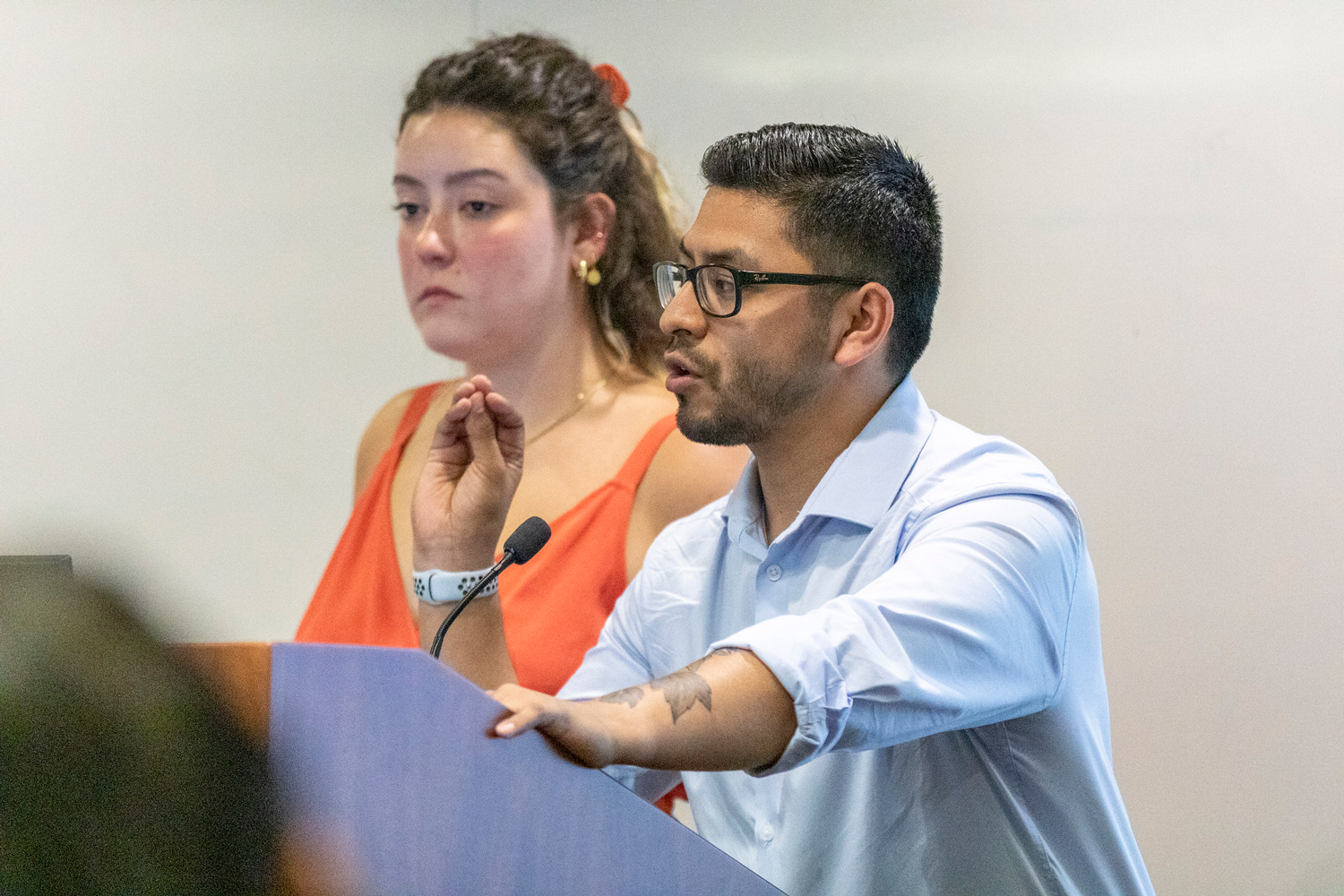
Miguel Miguel delivers findings from the Comprehensive Project’s final report. Miguel, a San Fernando Valley resident who has seen the impact of dangerously high temperatures on communities without adequate heat protection, said, “It was really important for me to be involved and to bring lived experience and emotional compassion into this [research].” Photo by Les Dunseith
“This information that the UCLA researchers are bringing to us is going to be part of the consideration and the development of those plans,” she said. “So, the timing couldn’t have been more perfect.”
Read more about UCLA’s efforts to combat the effects of extreme heat

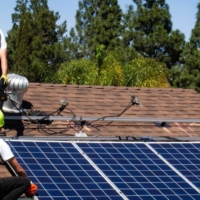
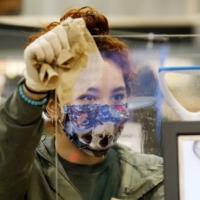


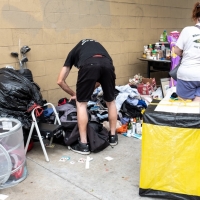



Leave a Reply
Want to join the discussion?Feel free to contribute!